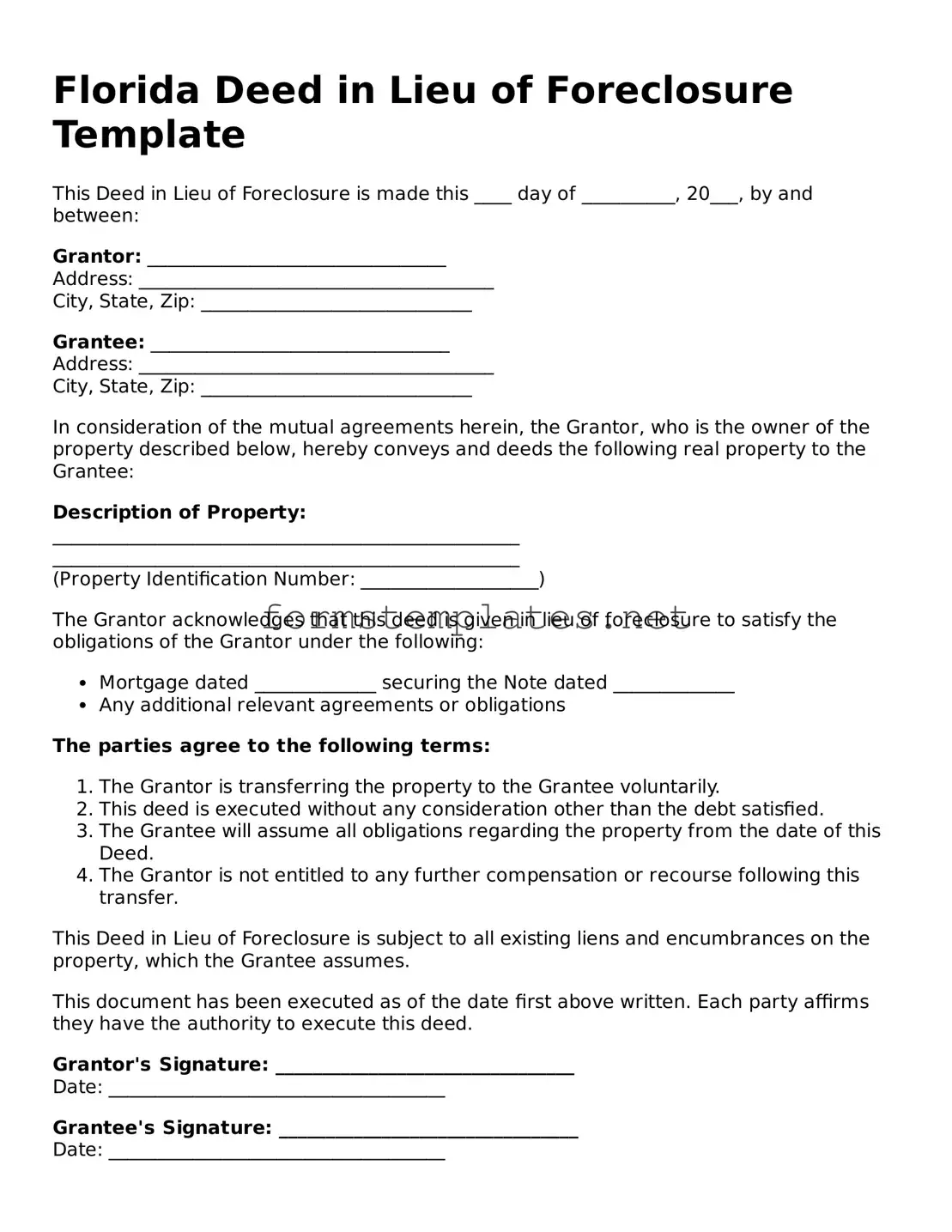Florida Deed in Lieu of Foreclosure Template
This Deed in Lieu of Foreclosure is made this ____ day of __________, 20___, by and between:
Grantor: ________________________________
Address: ______________________________________
City, State, Zip: _____________________________
Grantee: ________________________________
Address: ______________________________________
City, State, Zip: _____________________________
In consideration of the mutual agreements herein, the Grantor, who is the owner of the property described below, hereby conveys and deeds the following real property to the Grantee:
Description of Property:
__________________________________________________
__________________________________________________
(Property Identification Number: ___________________)
The Grantor acknowledges that this deed is given in lieu of foreclosure to satisfy the obligations of the Grantor under the following:
- Mortgage dated _____________ securing the Note dated _____________
- Any additional relevant agreements or obligations
The parties agree to the following terms:
- The Grantor is transferring the property to the Grantee voluntarily.
- This deed is executed without any consideration other than the debt satisfied.
- The Grantee will assume all obligations regarding the property from the date of this Deed.
- The Grantor is not entitled to any further compensation or recourse following this transfer.
This Deed in Lieu of Foreclosure is subject to all existing liens and encumbrances on the property, which the Grantee assumes.
This document has been executed as of the date first above written. Each party affirms they have the authority to execute this deed.
Grantor's Signature: ________________________________
Date: ____________________________________
Grantee's Signature: ________________________________
Date: ____________________________________
Witnessed by:
Witness Signature: ________________________________
Date: ____________________________________
Witness Signature: ________________________________
Date: ____________________________________
State of Florida
County of ________________________________
On this ____ day of __________, 20___, before me, a Notary Public, personally appeared ________________________________, known to me (or proved to me on the basis of satisfactory evidence) to be the person whose name is subscribed to this instrument and acknowledged that he/she executed it.
Notary Public: __________________________________
My commission expires: _____________________________
